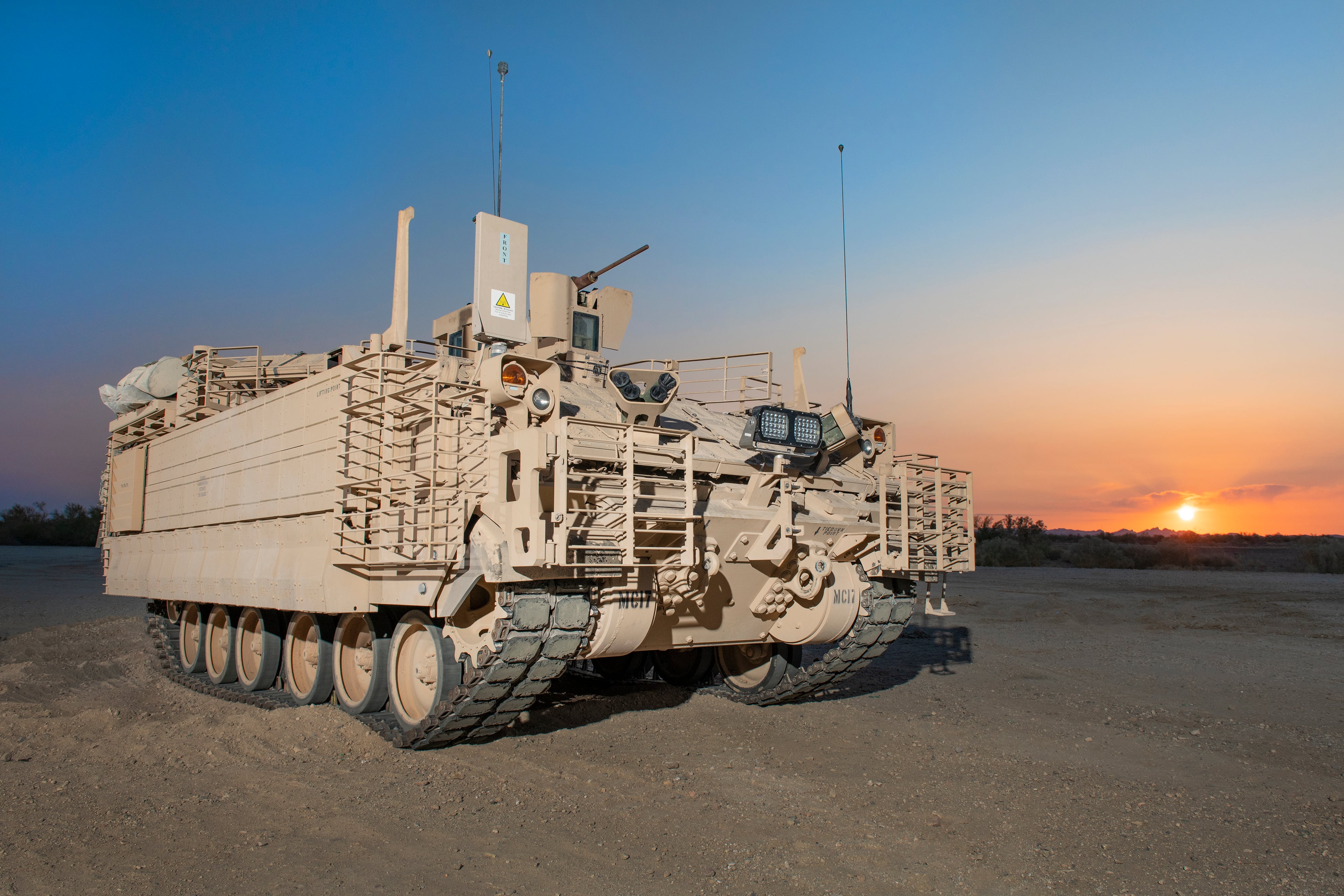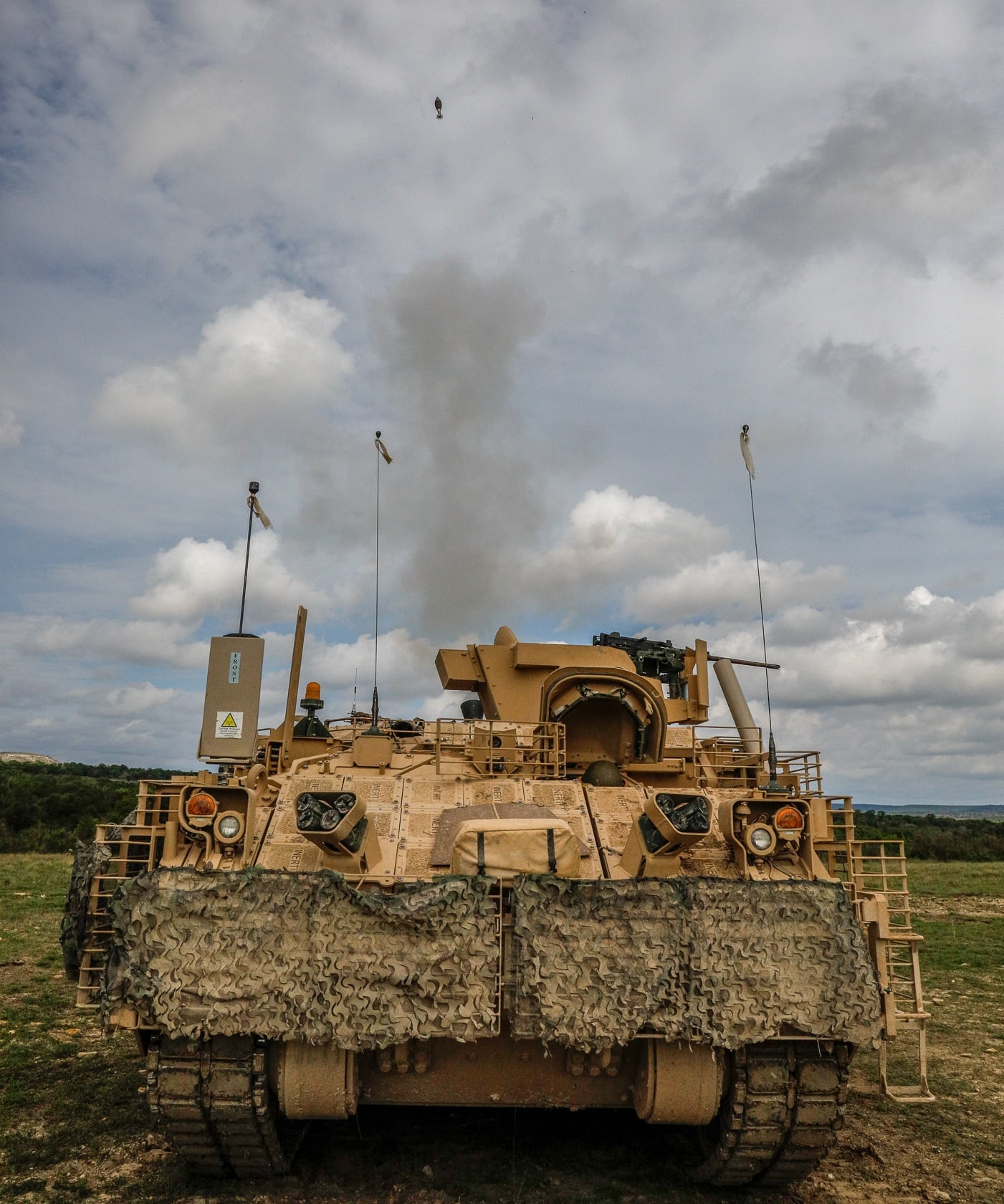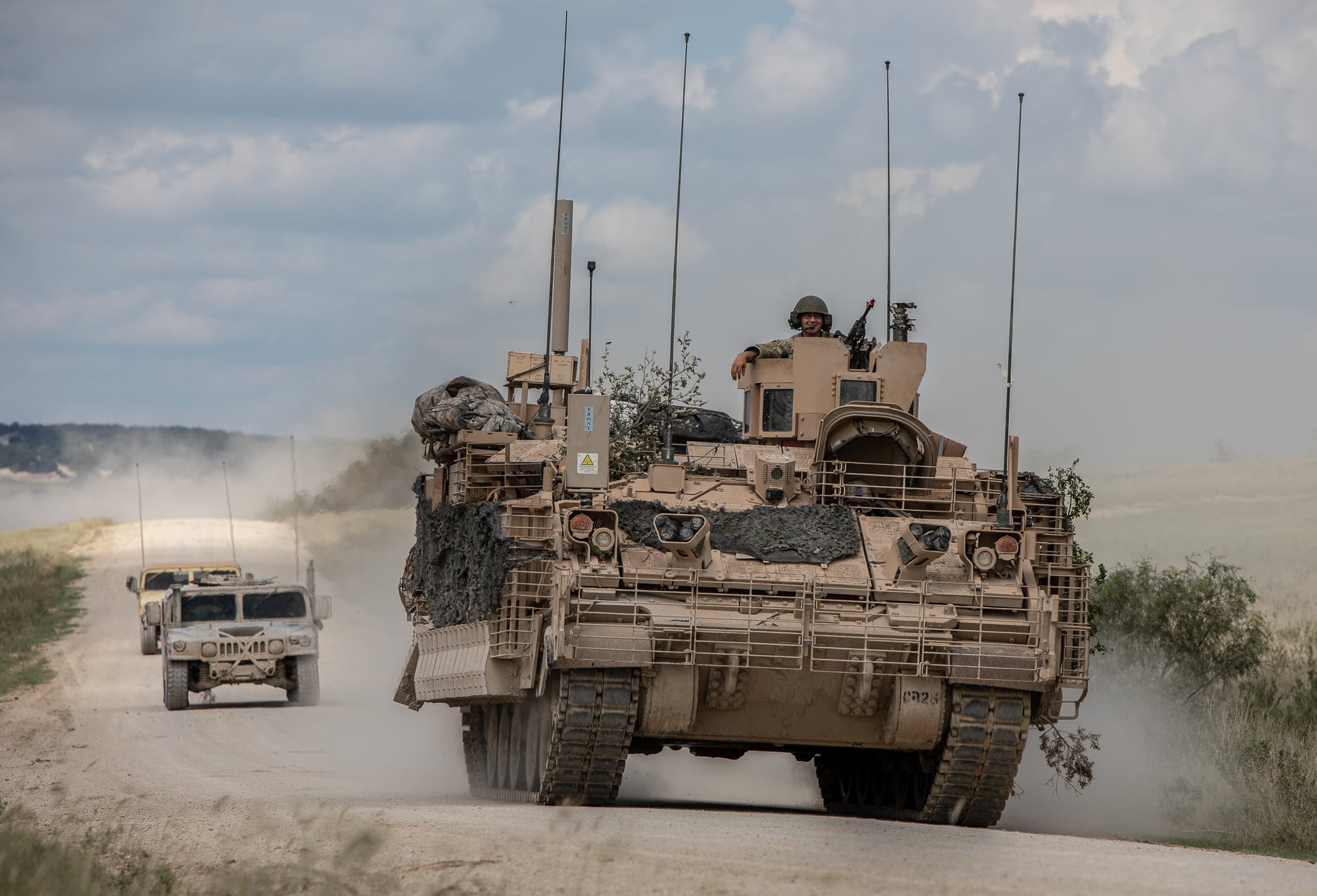The Army’s newest tracked vehicle, set to replace the half-century old Armored Personnel Carrier, is set to field next year in both the United States and Europe, according to recent Army budget documents.
The Armored Multi-Purpose Vehicle, or AMPV, has been steadily rolling through testing and initial production in recent years. The Army bought 131 of them two years ago and another 197 last year.
For the upcoming fiscal year, Army brass want money to buy 131 next year — about half for bases stateside and the other half headed to Europe — to bulk up armored capabilities to counter Russian ground and missile modernization efforts.
RELATED

And their plans continue with another 143 in both 2021 and 2022, then 192 in 2024. In total, service leaders expect to eventually have 2,897 AMPVs across the Army at a cost of about $14 billion.
That’s a good thing as they decided to quit upgrading the APCs in 2007 and have only funded maintenance.
The AMPV will make up a third of armored formation vehicles and the swap to the AMPV will provide a host of other options for ground commanders, according to Army documents.
The Army aims to replace five mission roles that the Bradley performs. Variants include a mission command vehicle that houses the Tactical Operations Center and Tactical Command Vehicle options. A medical treatment vehicle offers a mobile, protected platform for battlefield surgery.
The medical evacuation AMPV can hold a three-soldier crew and a combination of five to six patients, depending on the severity of their wounds.
The medical evacuation version is a rolling, tracked, lightly armored ambulance. The general purpose vehicle does resupply, maintenance and casualty evacuation, while the mortar carrier provides “immediate responsive fire support” to the formation.
The mortar carrier can fit two crew members and two mortar crew. It fires a 120 mm mortar.

During evaluations last year, observers with the Pentagon’s Director of Operational Test and Evaluation spotted some flaws that needed correcting before an estimated 258 AMPVs begin rolling out to soldiers in 2020.
Those included driver and vehicle commander displays that would lock up with long reboots. Also, radio communications equipment couldn’t be removed from docking stations inside of the vehicle.
More space for analog planning options such as map boards was needed. Leaking hatches caused concerns about damage to electronic gear.
There’s another effort underway to make the AMPV pack a more efficient battlefield punch.
The Army recently posted to industry a request for information on building a remote-operated turret that can fire both 30 mm cannons and a 7.62 mm machine gun. That was aimed at giving such a capability to the Stryker, M113 and AMPV.
The Army began adding 30 mm cannons to the Strykers at least two years ago, replacing its twin .50 caliber machine guns for extra firepower.
The fire support AMPV mortar version has that indirect fire capability but the 30 mm cannons could pack additional direct fire punch.
Todd South has written about crime, courts, government and the military for multiple publications since 2004 and was named a 2014 Pulitzer finalist for a co-written project on witness intimidation. Todd is a Marine veteran of the Iraq War.





